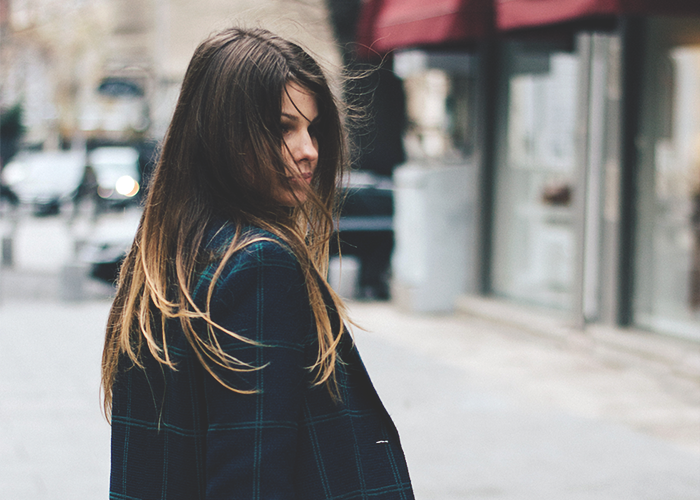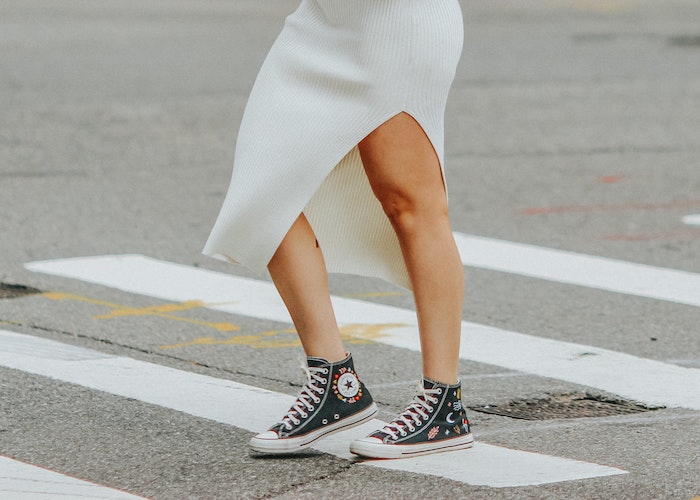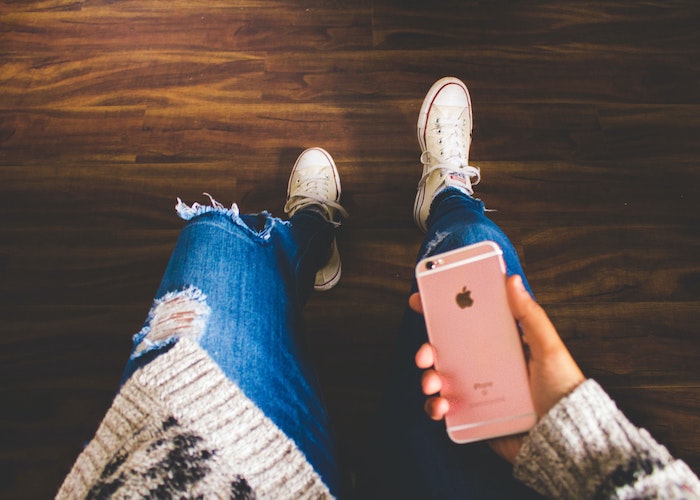All My Splurges & Saves From Building My First “Professional” Wardrobe

I’ve generally been pretty ~blessed~ thus far that my professional life hasn’t required a ton of business formal clothing. Between living in small-town Turkey and working at a series of nonprofits, I’ve managed to get away with the a-line dress + occasional blazer + flats combo for way longer than I should have. I acquired a few blazers and pencil skirts (that did not match) coming out of college and basically considered those my “professional staples” because they required dry-cleaning instead of machine-washing.
Unfortunately, all good things (like always being able to wear super comfy shoes to work) eventually come to an end. I’m currently gearing up for interviews with private law firms for next summer (and likely for a couple years out of law school), which means for the first time in my life, I actually need to invest in real professional clothing/general apparel, including my very first SUIT because mismatched separates and scuffed flats are not going to cut it in this world anymore.
However, I’m still a pretty broke law student accumulating debt to attend law school, which means my budget for these acquisitions has been pretty limited. After doing extensive research (aka a lot of Googling and asking friends already at law firms this summer), I came up with this list of absolute essentials:
- (At least) Two suits: one black, one other neutral-seeming color.
- Low, walkable heels, ideally in colors that match my suits.
- A few shell-esque tops to wear under suits.
- One really, really perfect black sheath (suitable for work, post-work socializing, etc.).
- A neutral, expensive-looking-but-still-practical handbag.
- Non-ripped pantyhose.
- A well-tailored coat.
I had a few prerequisites when starting my search. First off, I’m well aware that unlike the nonprofit world, where people generally don’t care all that much, in the corporate world, people can tell — and do care — when the clothes you’re wearing are cheap. Second, dropping a serious chunk of change for a whole new wardrobe is not something I want to do more than once in a while, so whatever I bought, I wanted to make sure it was high-quality and would last for at least a few years (i.e. when I can afford to upgrade my wardrobe again). That meant, for the most part, I needed to buy high-quality items from well-known brands. And I needed to do it on a budget. I set an absolute MAX budget of $1,000 for everything. Interviews start next week, so here are all the things I ended up with.
The Saves:
- Blouses: $120. These proved to be the easiest. I started out trying on more starchy button-downs, but ended up with a bunch of collared rayon shirts for about $15 each (on sale!) in neutral colors from that mecca of simple, neutral basics — Uniqlo. I didn’t want to spend a ton of money on these, because from experience, shirts pick up sweat stains and unidentifiable marks, and generally wear out more quickly than anything else. Uniqlo’s rayon shirts are also wrinkle-proof (YES) and machine-washable (DOUBLE-YES), both of which are extremely necessary for my low-maintenance self. This was also a great professional-wardrobe lesson, in that when you come across something neutral, of generally decent quality, and that fits you well, buy it in a couple colors and call it a day. Between scoping J. Crew and Ann Taylor sales like a HAWK, I ended up with a couple cute subtly-patterned-and-more-starchy button-downs for around $20 each. I didn’t spend more than $20 on a single piece, and wound up with seven new shirts in total.
- Tights and Pantyhose: $10. Yes, I get that there is a general school of advice that buying really expensive tights is worth it because they’re chemically engineered not to snag even in the face of literal knives shredding them, but I’m a generally clumsy person who always manages to snag tights within a day no matter what their price point. So this is one area I’m going to continue buying cheap till proven otherwise. I bought a couple pairs of $3 L’eggs
(which I’ve found surprisingly more durable than many tights at higher price points) at my local CVS, and will be praying for the best.
- The Perfect Black Sheath: $40. I was expecting this one to be pricey, but I found the (literal perfect) black sheath at Loft, of all places. It’s well cut, made of a pretty thick material, and HAS POCKETS. To my untrained eye, it definitely looks on par with something you’d get at actual Ann Taylor or similarly pricier points, and more importantly, I feel like a Badass Power Woman in it. It retailed at $90, but I (again, by stalking sales) bought it during one of Loft’s ever-present 60%-off sales earlier in the spring, bringing it down to just over $40.
The Splurges:
- Heels: $80. This is more money than I’ve spent on one piece of footwear at any point, but several trusted people let me know early on that if there’s one place it’s worth it to splurge, getting a pair of well-made, super comfortable heels is it. Because during interview season, you can expect to be on your feet, in heels, for the vast majority of the day. Several people pointed me to Naturalizer as the home of the comfiest heels they’ve ever purchased, so I ended up getting these heels
as a starter (in basic black, so they’d go with all the suits I purchased). I have hopes of actually upgrading to ~branded~ fancy heels (and ideally having more than one pair) whenever I can, but for now, these satisfy my basic requirements (look good, remain walkable for 7+ hours), so there we go.
- An expensive bag: $210. Again, ouch. But there are a couple reasons for this. One, a good work bag needs to be large and durable enough that it can carry all your crap — which, during interview season, includes that bulky monstrosity, a padfolio
, and for me, snacks — which automatically bumps up the price of any designer bag. Two, your bag is the most easily-identifiable purchase in terms of its brand and quality — the label is right there on it! That means carrying an easily-identifiable “expensive” bag is a weird signifier that makes people think the rest of your apparel is probably more expensive than it is. I decided pretty early on that Kate Spade was going to be my “starter” handbag brand of choice — I like their designs, the price point isn’t ridiculous, and they actually have legit sales every so often. I knew a bag upgrade was imminent, so I’ve been stalking one particular bag for almost a year before it finally went on sale during early summer — the Margot. It’s large enough to hold my laptop and padfolio, plus other essentials: I got it in a beautiful black leather that’s pretty forgiving of dirt and scuff-marks, and most of all, it’s from a great brand without being ridiculously expensive. Because I got it on sale, it ended up being about $150 less than its normal retail price, so while still pricey, it feels like a good deal.
- Suits: $390. I finally wound up with four really nice suits; black, black pinstripe, dark gray, and light gray. I bought a black pantsuit from Ann Taylor during a sale, which ended up running to $110. My secret weapon here was discovering how to suit-shop on ThredUp, an online consignment store. It has a HUGE selection of suits from excellent brands, but obviously, the most important part of buying a suit is making sure the fabric matches, and Thredup doesn’t sell suits as a whole. However, they do let you see “other items from seller,” and chances are, if someone is selling a suit whole (as opposed to mismatched separates), it’s pretty easy to find the matching piece in their “bag.” This was hugely time-consuming — I’d basically queue up Netflix and browse Thredup for an hour multiple nights a week, and ended up buying and returning a few times before I got suits I was happy with. But it worked out, because I wound up with THREE really nice — and almost-new — suits from Theory and Tahari, which normally retail for $600-900 new — for the low, low price of $280. One actually came with the tags still on. (I was also advised to check out Nordstrom Rack for suits, but they didn’t have too much while I was on my shopping spree.)
Total: $850.
There’s still clearly a few things I hope to add to my wardrobe, but considering I spend most of the year in sunny California, a coat is not high on my list of priorities (my J. Crew peacoat is a few years old, but still in good shape), so I’m pretty happy with how things turned out. If there’s any advice I could give: if you think a professional wardrobe is imminent in your future, start shopping early. You can get amazing deals and generally buy branded stuff for a lot cheaper than advertised, but shopping over a couple of weeks, as opposed to a few months, means you’ll likely end up paying a lot more than you’d like for clothes.
Second, buy neutral when you’re first starting out. I’m slated to wear more black, gray and navy than ever before in my life (and as someone whose wardrobe generally looks like a rainbow threw up on it, this is a first), but the way I see it, the ~statement~ heels/bag can wait until I’m actually making an income, and in the meantime, the clothes I have go with everything (including, hopefully, new brighter-colored acquisitions down the line).
Third, spend a lot of time in brick-and-mortar stores, but buy everything online. Online stores — particularly the ones good for professional wardrobes, like J. Crew and Ann Taylor — tend to have better (and more frequent) sales, so if you stake out the things you like, you can watch them from afar online until they’re at a sales price you feel good about (and they will nearly always get to a sales price — I’ve yet to keep my eye on anything that sold out without going on sale first). Also, it helps you get a really good sense of your sizes, making it easier to turn around and buy similar pieces from online consignment stores at a fraction of the cost.
Finally, don’t let yourself get pushed into buying shit you don’t need from pushy sales girls. This is a major reason I did 90% of my shopping online — because salesgirls see people “investing” in wardrobes as a legit gold mine. Few people know what they’re doing and everyone expects to part with a large chunk of change, so it’s easy to find yourself at the register, forking out for bright red statement heels and an oversized necklace because a salesgirl INSISTED they went so well with the single white blouse you went in to purchase.
What are your tips for buying professional clothes on a budget? I still need all the help I can get, so please sound off in the comments.
Meghan Koushik is a cheese enthusiast and law student in California. You can find her on Instagram.
Image via Unsplash




